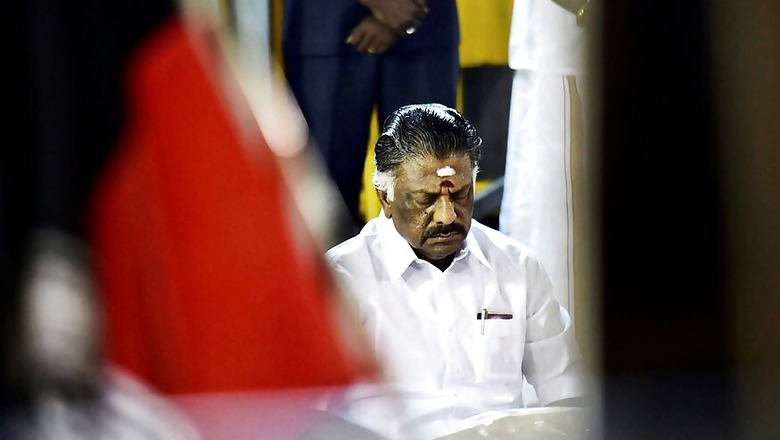
views
New Delhi: With AIADMK party set for a vertical split, which way Chennai will swing now squarely depends on one man: Maharashtra Governor Vidyasagar Rao who holds the additional charge of Tamil Nadu. And gone are those days when the Governor – and through him the Centre – could hire and fire chief ministers at will. Supreme Court’s landmark verdict on SR Bommai vs Union of India (1994) case has changed all that, and the Assembly rules supreme. News18 explored what are the options before Governor Rao now.
Can Governor Rao order dissolution of the State assembly?
The resignation of the ‘caretaker’ chief minister O Panneerselvam was accepted by the Governor last week, but on Tuesday he dropped a bombshell by saying he was forced to quit. He has asked the media now to “wait and watch”. Pannerselvam has also said he will withdraw his resignation, but if he realizes he doesn’t have the majority, he can recommend to the Governor to dissolve the assembly. But for such a proposal to take effect he would need the backing of a majority of the MLAs. That would be hard – just why would the MLAs go for fresh election with almost four years of their term remaining?
The logical step now for the Guv would be to ask Panneerselvam to prove his majority in the state assembly. Now, here lies the catch. Rao can choose when the CM should go for floor test. As things stand, majority of the party’s 134 MLAs look firm with Sasikala but if the Governor gives more time, Panneerselvam would emerge stronger. And if the SC ends up convicting Sasikala in the disproportionate assets case next week, it would be game over for Sasikala.
The Governor can also put the House in suspended animation if neither Sasikala nor Panneerselvam are able to prove their majority.
What if Panneerselvam passes the floor test?
If Panneerselvam proves his majority in the House then Governor Rao would refer to provisions of Anti-Defection Law and check if the expelled leader enjoys support of two-third of AIADMK MLAs. In such a situation, he may see if AIADMK splits and Panneerselvam floats a new party.
In the case of Rameshwar Prasad & Ors vs Union of India, 2006, which held the dissolution of the Bihar Assembly as illegal and unconstitutional had clearly stated that “After elections, every genuine attempt is to be made which helps in installation of a popular government, whichever be the political party. The Governor must not be allowed to take the plea that no government could be formed, unless he exhausts all possible options, including the one of asking the House itself to elect its Leader. Extreme step of imposition of President’s Rule immediately after the election without allowing the newly elected House to meet was nothing short of contempt of the electoral exercise and the verdict of “(We) the people”.
Will President’s rule be imposed in Tamil Nadu?
Well, that window would open if Sasikala ends up becoming the chief minister anyway and she gets convicted in the disproportionate assets case next week. The state then would become leaderless, and if it plunges to chaos, the Governor will step in. If Governor Rao decides to go ahead and invoke Article 356 and thereby impose President’s rule in the state, then the present status quo cannot be restored unless the expiry of a period of 6 months, or unless the proclamation of emergency is challenged in the court. It is a highly unlikely option given the clear stand of the Supreme Court in the Bommai case.
What does the famous SR Bommai case lay down about invocation of Article 356?
In this case, SC had laid down certain guidelines to prevent the misuse of Article 356 of the constitution. It mandated that the majority enjoyed by the Council of Ministers to be tested on the floor of the House. It also stated that the Centre should give a warning to the state and a time period of one week to reply. SC had held that Article 356 is justified only when there is a breakdown of constitutional machinery and not administrative machinery, and asked it to be used sparing by the centre “otherwise it is likely to destroy the constitutional structure between the centre and the states.”
Can the Governor allow Panneerselvam to function as a ‘Caretaker CM’?
No, that cannot be the case anymore because although Panneerselvam had already expressed his wish to withdraw his resignation as the CM. There is an option with the Governor to revoke his resignation letter ad reinstate him as a caretaker CM till a new leader is elected. Whichever way the game plays out, unless Pannerselvam goes back on his statement and insists he will quit, the drama will now shift to the floor of the house.




















Comments
0 comment